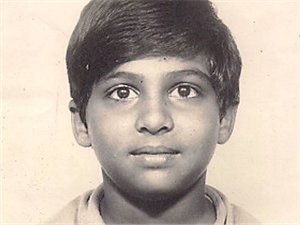Portrait of a Genius Part 1
The Opening Moves
Madras, 1981
The club resembles a room full of people in a television screen, with volume turned mute. Most are huddled around a single table, papers and pads in their hands, scribbling down illegible characters resembling something like algebra. The heat of Madras is at its trademark best; not extreme but continuous. On the table is a chess board with a dilapidated clock next to it, keeping an eye on the black and white pieces in the game. The white player is known for his speed and tactical acumen. He has a small frame, but at the board he is as frightening as a tiger on the loose.
He is eleven years old.
The black player bangs the moves with great accuracy. But the punches do not even cause the lad to blink. He grins at his opponent and keeps clawing ahead.
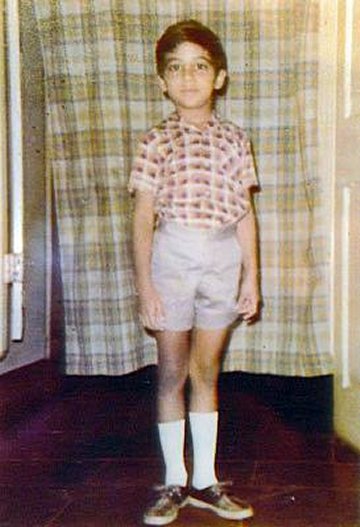
Vishy Anand, 1976
To think that a country like India in the 1980s could throw up a serious contender to the World Chess Championship crown was farfetched. Living in the current times it appears incredible to know that once upon a time chess in India was just a niche sport. However, it doesn’t remain so. A single chess tournament has at times crossed the 600 entries mark and that on a regular basis. Today, it is a sport played by the masses in India, just like cricket, only not as rich.
The Catalyst?

“So we brought this upon ourselves!” – Vladimir Putin
They say Vishy Anand was the first to challenge the Russian chess hegemony since the American genius Bobby Fischer. In 2007-08 the upheaval was completed with the defeat of Vladimir Kramnik. Ironically, Vishy was himself a product of Russian chess promotion. As a boy he took his first steps in the world of chess at the Tal Chess Club, which was established in Chennai by the Russian Cultural Centre in 1972. Although chess was not a well-known sport anywhere else in India the Chennai chess scene during those days was bubbling with activity; a not so surprising antithesis in comparison to the rest of our nation, a diverse land.
Players and enthusiasts would gather at the club, especially on Sundays, to quench their thirst for some chess action. They were a group of passionate chess lovers committed to the game. Due to the shortage of chess sets the players were asked to limit themselves to blitz so as to give opportunity to the maximum number of enthusiasts, with the policy of ‘winners to stay’, a concept the younger players could easily identify with. The loser had to give up his seat to the next in queue, who would continue by playing the winner.
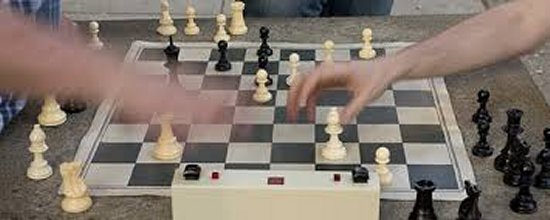
Blitz has always been Vishy's forte
Growing up in such a thrilling environment, where lightning speed and a quick eye for tactics ruled the day and play, the cub from Madras sharpened his claws and teeth, those claws and teeth which would one day make the strongest names in the chess world run for cover. The players would come to the seat, punch their moves and go. Nevertheless, no one caused him to blink. Vishy kept beating one guy after another. The cub was maturing into a tiger at lightning speed.
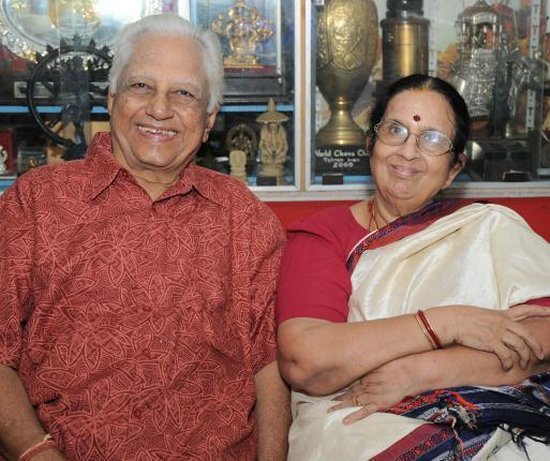
The parents of one of the most remarkable players in history
1969
Vishy Anand was born on 11th December 1969 in the town of Mayiladuthurai in Tamil Nadu, India, to K. Viswanathahan, a general manager of Southern Railways, and Susheela, who herself is a chess aficionado. His family later on moved to Chennai, then known as Madras, where young Anand picked up the game from his mother when he was 5-6 years old. At seven he joined the Tal Chess Club where he began to hone his skills. The effect of this chess club born out of Russian benevolence was something to which Anand remains grateful to this date.
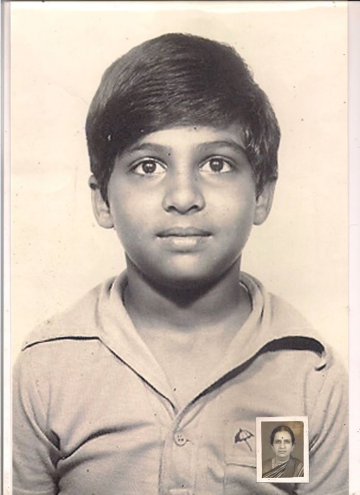
A mumma’s boy at heart. 6 year old Anand.
The Tal Chess Club was the place where young Vishy received his first chess instructions. India’s first International Master Manuel Aaron, a legend in every sense of the word, used to deliver lectures from the Russian chess magazines for club members. Vishy would soak in the information and would learn to apply them in game situations. Whenever there was no school he would hop into the club and play blitz with anybody who would turn up. His thirst for the game was visible right from that age. Although he wasn’t beating them outright, he was learning. It was only after 1980 that Anand became the undisputed ‘king of the castle’ at the Tal Chess Club.
There is a funny story of a weekend tournament where the little boy played. Game after game he was awarded a naught for losing. In one of the rounds his opponent failed to turn up, so the arbiter awarded Anand a point on walkover. Anand ecstatically ran to his parents and announced that he finally won a game! Amused, his parents asked who his opponent was. Not knowing the difference, he innocently replied, “I don’t know. He ran away!”
Anand played his first open tournament in 1977 when he was eight years old. It was the Larsen & Turbo Open, and like any debutant at the open stage he didn’t win any prize. In those days category tournaments were a rarity, and if one wanted to develop chess skills it had to be in the rough and tough world of open tournaments. Nevertheless, it wasn’t long before he won his first prize as consolation at the Madras district Sub Junior Chess Championship held in the same year. It was given as an appreciation for his play and to encourage him further. One gentle push that probably set the ball rolling.
Although he was yet to reach his peak as a junior player, his remarkable speed and attacking chess stood as his hallmark and were the signs of the things to come.
Thrilla in Manila!
Manila, the capital of Philippines, first shot to sporting limelight in 1975, when it witnessed the legendary Muhammad Ali take on Joe Frazier for the World Heavyweight Championships. In 1978, Philippines was again in the spotlight, this time it was due to chess. The city of Baguio was host to probably one of the most bizarre world championships ever witnessed in chess history, when the Soviet Anatoly Karpov took on the anti-Soviet Viktor Korchnoi.
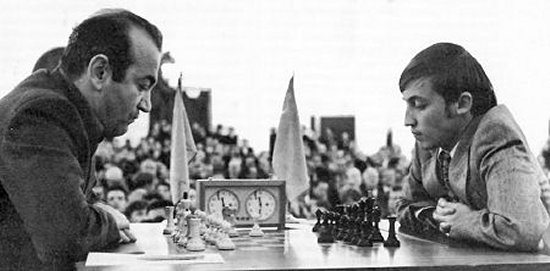
Viktor Kortschnoi (left) against Anatoly Karpov (right)
In 1978, K. Viswanthahan, who was the chief mechanical engineer at India’s Southern Railways, was asked to take a posting in Manila, Philippines, as part of a work assignment. Consequently he moved there with his family. Anand’s mother was adamant that Anand maintain his sporting life there too, which made her take little Anand to tennis and chess camps.
Due to the 1978 World Championships, the Philippines were witnessing an unprecedented chess boom. Anand and his parents arrived a month after the World Championships had finished. Although he had missed the World Championship match, his parents did take him to Baguio City, to the resort where the match had been held. They visited the playing hall where Korchnoi had taken on Karpov’s might but failed to beat him. Subconsciously, Anand might have taken a liking for that place. Years later, it was in that very same hall that he created history (more on this in Part 2).
Nevertheless, the country itself had become a hotbed for chess activities. The leading role in this increase in popularity of the game was played by Asia’s first grandmaster Eugenio Torre, a Filipino himself. Torre was a legendary figure for Asian chess playing countries and was a highly revered figure, the subject of attention everywhere he went.

Asia’s first Grandmaster: GM Eugenio Torre
Tournaments were conducted regularly, especially on weekends, where young and old would compete for prizes. Anand’s parents would take him to the venue and wait as their child played his heart out, impressing fellow competitors with his dazzling tactics and incredible speed of thought. His speed and fresh attacking style of play actually earned him a lot of spectators who were naturally drawn towards the Indian wunderkind. Never did he return home without a prize in his hand. Representing De la Salle University School of Manila, Anand surprisingly won the gold medal in an inter-school competition.
Motivated by the flurry of chess activities in Philippines, a chess lover by the name Florencio Campomanes began producing Chess Today, a TV show based on chess which would be aired from 1 to 2 in the afternoon. At his peak Campomanes was a player of master strength. In the programme games played by grandmasters and International Masters would be analysed for the benefit of the chess lovers. Florencio Campomanes, or Campo as he was known to the chess world, went on to become the FIDE President from 1982 to 1995, a period which saw the infamous termination of the Karpov-Kasparov World Championship Match in 1984, with Kasparov breaking away from FIDE and forming the PCA.
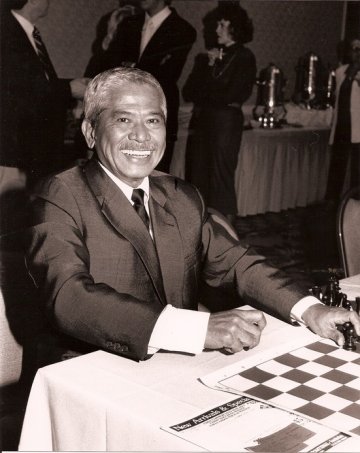
Florencio Campomanes
Young Anand was a fan of the TV show Chess Today. The problem was he used to attend school at the time when the show was aired. Not to let this hamper her child’s progress, Anand’s mother made sure to watch the programme herself and maintain the score of the game discussed on the show every day. In addition to the game, at the end of every episode, there would be a puzzle to be solved by the viewers and be sent to the TV station. Usually it used to be endgame positions, and there was a prize for the correct answer.
Anand’s mother noted every position down, at times even managing to tape the episodes. As soon as Anand returned from school he would complete his homework and be ready to savour his daily dose of chess. He would use a small chess board, the only size he had, and go through the games, studying the moves, with his mother explaining the notes. His favourite pastime was of course the puzzle, which he would solve with utmost interest. Those were the days when the idea of analysing hundreds of positions on your computer screen simply did not exist and everything had to be done on your own on a real chess board. The charm of the game was to get the answer right, without any outside support!
Anand used to solve these puzzles daily, and his mother would mail the answer to the TV station. This routine made Anand go from a talented young boy to the feared tactician he became. The cub was indeed learning to hunt! The winner on Campomanes’ TV show would be the one who got all the details correct, and his/her name would be announced in the very next episode and he/she would be given a chess book as a prize. Anand built up a sizeable collection of chess books in this manner. He won so regularly that the TV station were fed up with him: they called Anand to their library and asked him to pick up whatever book he wanted, but to stop sending the answers, so that others could get a chance!
This played a crucial role in Anand’s development as a chess player. There were no computers to prepare in that age and Anand relied heavily on these books to improve his chess. He used to read books like 1001 Opening Miniatures, Opening Traps and Swindles, how to avoid them and other books of similar vein, which could help him make a quick buck or two! He admitted that he, at least at that stage of development, didn’t get into heavy stuff like Nimzowitsch!
GM Eugenio Torre had a brother who was also his coach. He used to conduct camps and tournaments so that children could participate and take up the game. On one such occasion, he presented Anand with a regular size chess board and pieces and told him, “You should practise on these and come up in life”. And boy did he come up!
The cub returns to Madras...
“Karpov is my choice,but if Bobby Fischer comes back I have to shift the reigning World Champion to the second spot”. – Little Anand on his favourite chess player.
.JPG)
A newspaper report by V. Kameshwaran, probably the first media mention of the famous moniker ‘Lightning kid’
In 1980, Anand returned to Madras, and from then on he started playing chess tournaments basically every weekend. Of course the Tal Chess Club was the haunt where Anand steadily built his legend. Every Monday evening, Thursday evening, second Saturdays and Sundays, whenever the Club was open, Anand would go there and play blitz chess, five minutes each on the clock, and defeated all comers. He would at times play through the evening till night staying undefeated.
Anand played whenever he could, as much as he could! He first caught the eye of a foreign grandmaster when Soviet GM Vladimir Bagirov visited Madras in 1980 and played a simultaneous exhibition against the school children of the city. Anand obviously impressed him with his trademark speed and abilities and earned himself a pat on his back from the Soviet grandmaster.
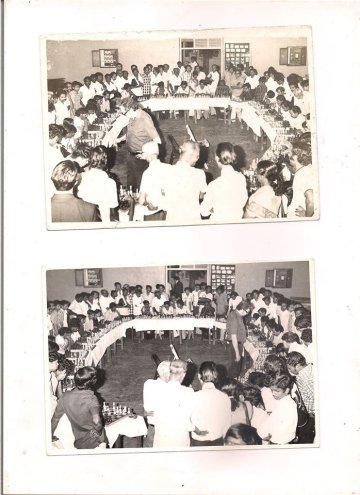
GM Bagirov playing the simultaneous exhibition. Can you spot Vishy?
He was at his breathtaking best in the lightning events. He began to regularly finish at the top of the heap of lightning tournaments, even in the seniors section. It was around this time that the local print media – and especially chess loving journalists like V. Kameshwaran – began to call him ‘The Lightning Kid’.
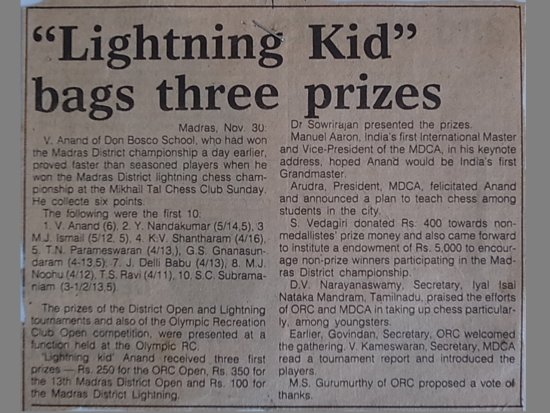
Private Collection of Eric Van Reem
The 1982 Tamil Nadu State Junior (U-19) Championship held at Salem proved to be a cakewalk for the young man: he won comfortably with a score of 6.0/7, beating players who later witnessed him tower over the chess world, yet remain close friends. At the National Sub-Junior Championship of India held in December that year, Anand finished fifth.
Here is one game which Anand lost in the 1981 edition of the Tamil Nadu Junior Championship where he shared 2nd-4th places. This was played a year before he won the event.

Tamil Nadu State Junior Champion, 1982 at Salem
Tamil Nadu was basically hailed as a seat of learning in chess, and there were tournaments all around the state. To this date, it remains the central chess province of India. Over the years, Anand competed in many of those tourneys, developing his skills as a player. These events were frequented by players like Indian stalwarts Arun Vaidya, Pravin Thipsay, Raja Ravishekhar and other strong players. Anand watched these Indian greats play and soaked in every bit of experience.
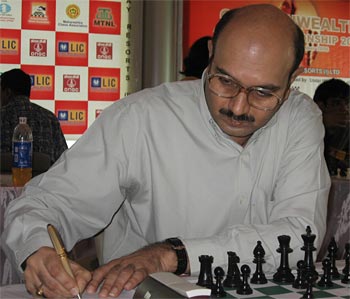
GM Pravin Thipsay, an Indian chess Legend.
Like a young tiger he lurked in the shadows, waiting to pounce on his moment. However, it was not until 1983 that Anand got his first major breakthrough.
(More about that in part 2 that will follow soon)
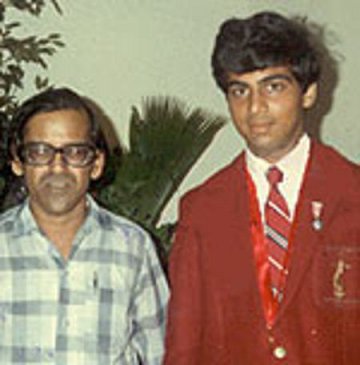
IA V. Kameshwaran
Special thanks to IA V. Kameshwaran for sharing the valuable pictures and newspaper cuttings. Mr. Kameshwaran is the first International Arbiter from India and has acted as the official coach for young Indian players in their tours abroad. He is also a reputable chess journalist.
Bibliography:
- Old Chess Mate magazines. One of the best sources of Chess news in India.
- Vishy Anand Interviews at rediff.com, 2000.
- Saturday Extra, Tribune Magazine, October 16, 2004.
- Anand on World Championships: From Square one to World Championships in Bonn, Chessbase, 2009.
- Pictures from Mr. Eric van Reem, former member (admin.) of Team Vishy, and V. Kameshwaran, renowned chess journalist.
